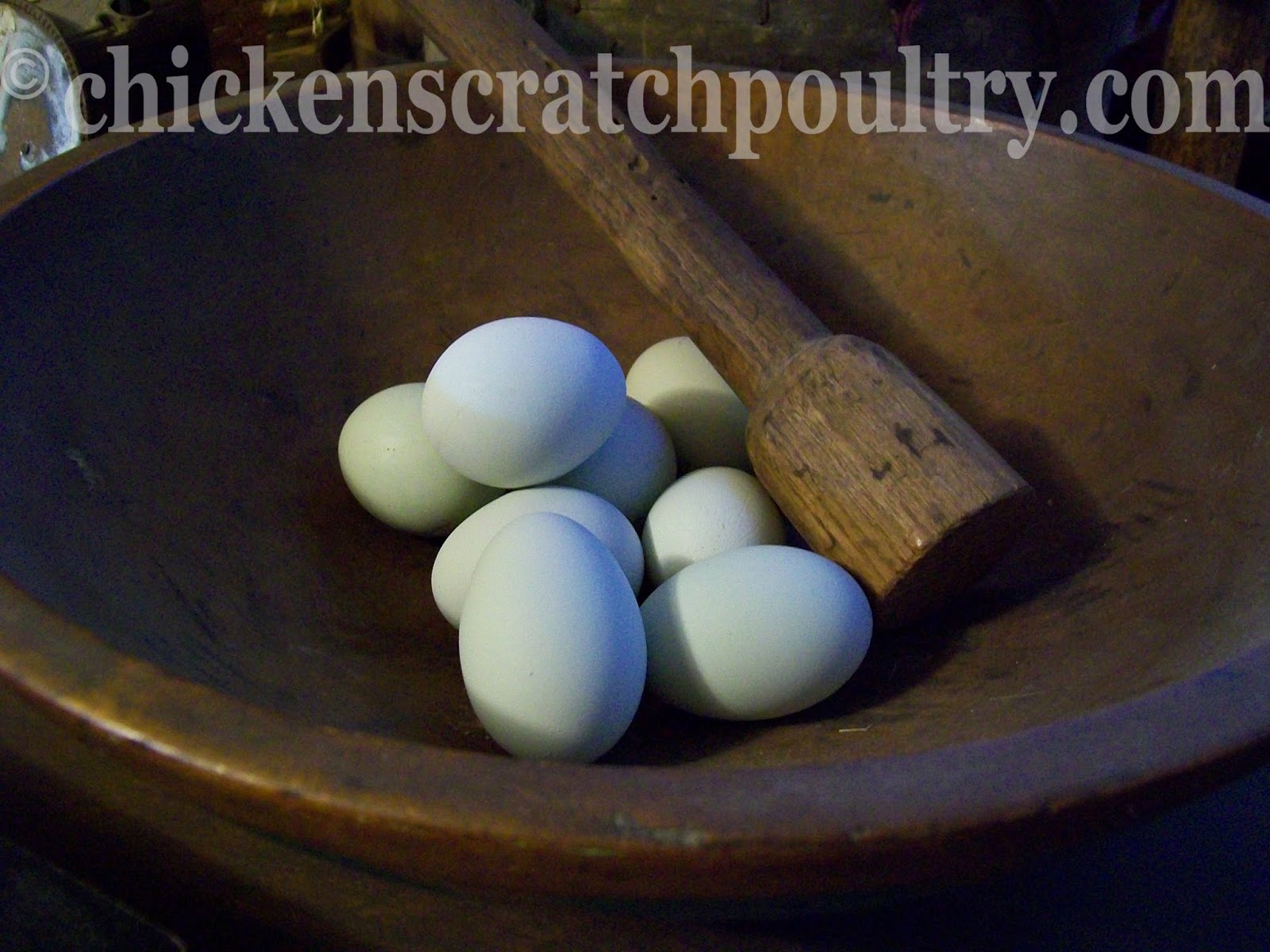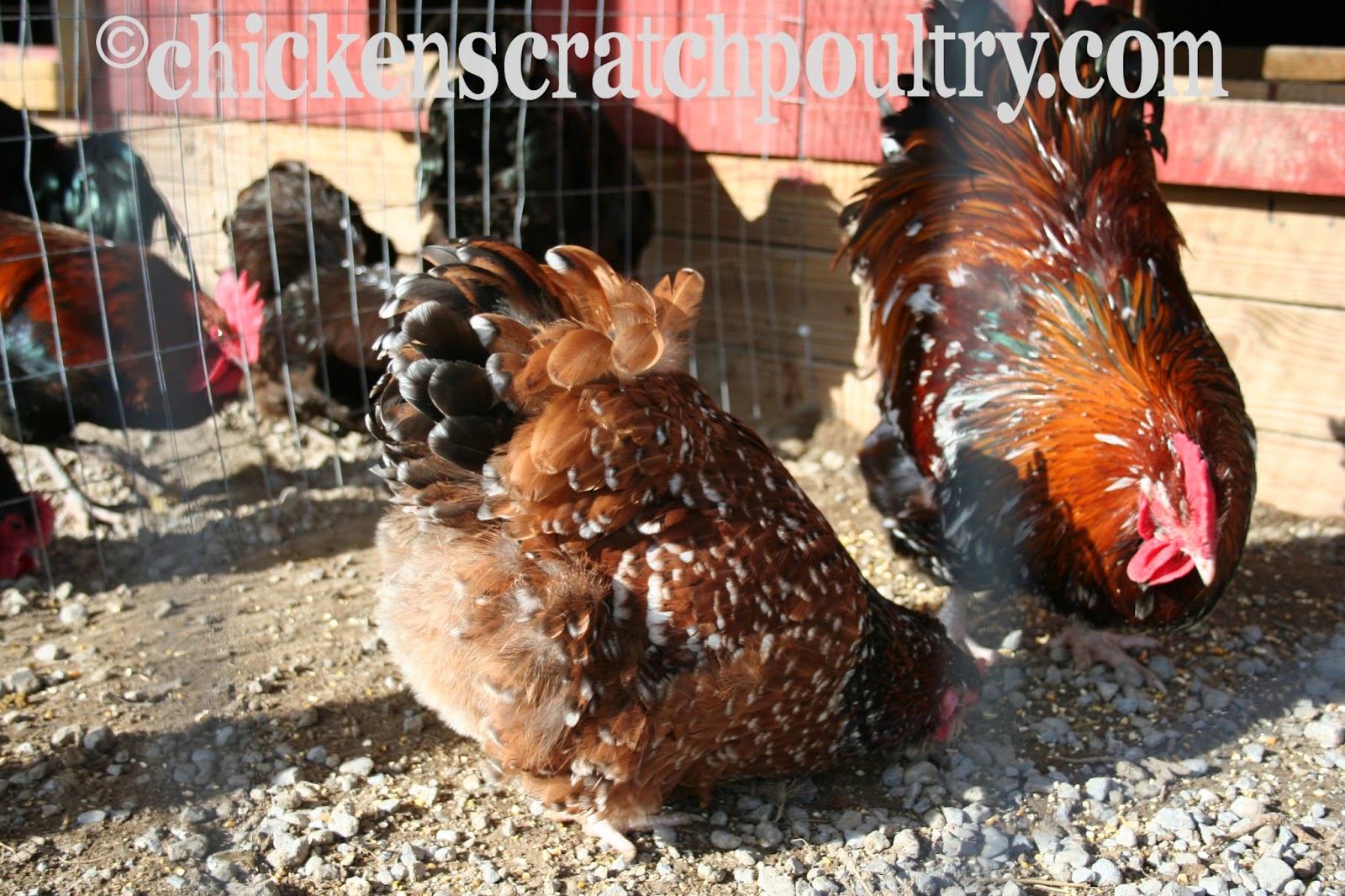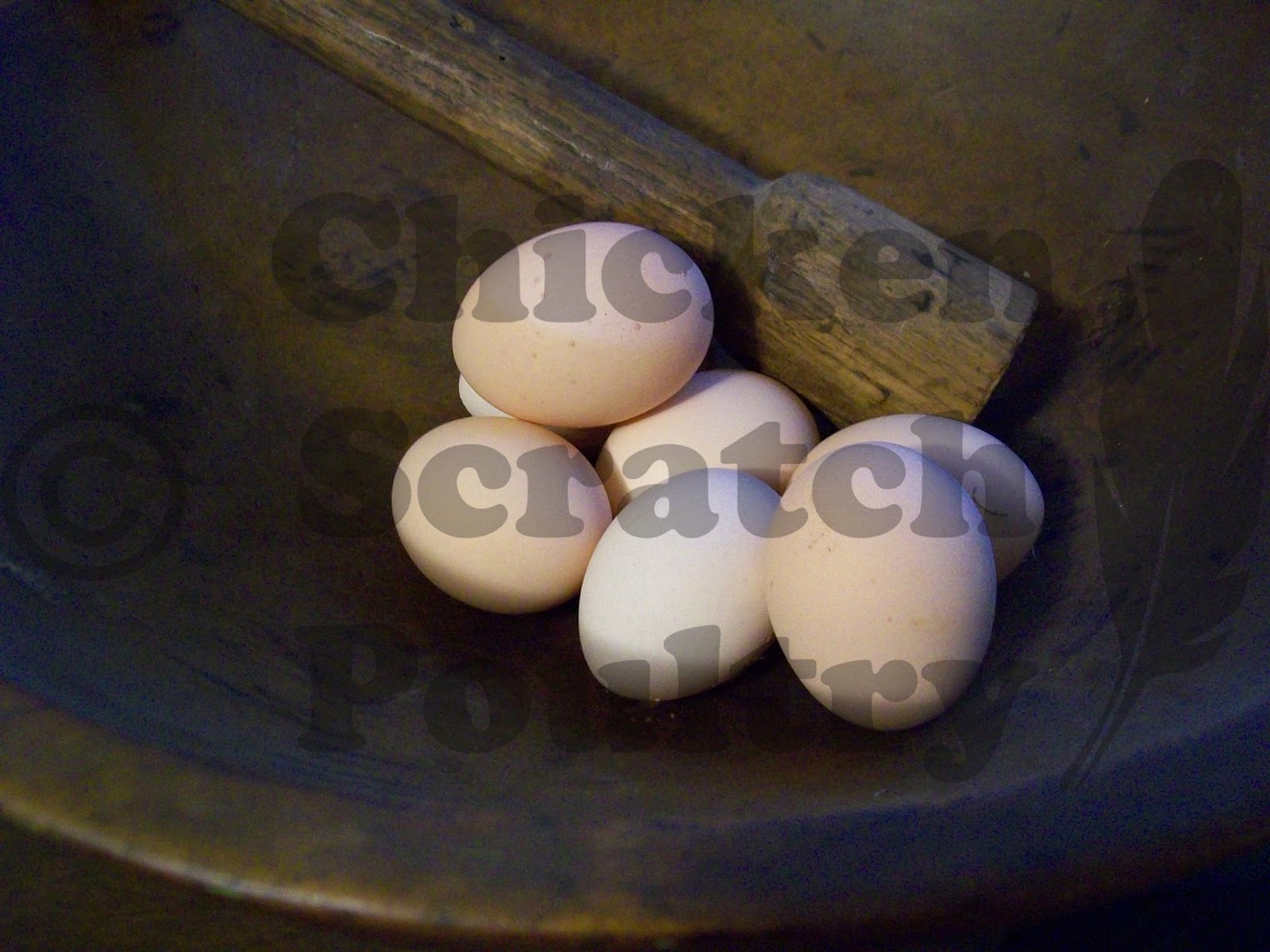Today let's talk about the Chocolate Orpington. Our Chocolate Orpingtons are a bantam not the standard size bird. They are not a real tiny bantam but they are smaller than our standard sized birds. The Chocolate Orpington is a new breed to the US and has only been here for a couple of years. I have heard that the Large Chocolate Orpington is also in the US now but have not had much luck finding it. The ones I have seen look no bigger than what I have at this time but that's not to say that they aren't here.
 The Orpington breed is well know for it's gentle nature and friendliness, the Chocolate fits that description perfectly. When I'm gathering the eggs in their pen they are the one bird that is looking me in the face as if to say "what are you looking for and can I help you find it?" I can always reach right out and pat their fluffy rears.
The Orpington breed is well know for it's gentle nature and friendliness, the Chocolate fits that description perfectly. When I'm gathering the eggs in their pen they are the one bird that is looking me in the face as if to say "what are you looking for and can I help you find it?" I can always reach right out and pat their fluffy rears.The hens are almost completely round and the size of a volleyball. Their feathers drape down over their feet and cover their short legs, this gives them the appearance of floating along the ground.
The chocolate gene is the same as the Lavender gene in that it will breed true. When breeding chocolate to chocolate you will get Chocolate drops. You can improve on this breed by breeding a black bantam Orpington back into the flock. The Chocolate Orpington is a good bird to have if you are limited on space, since they are a small breed.
 The roosters have amazing personalities, they are feisty, yet friendly. They are very animated, playful birds. Melissa, my niece who helps me with the blog, had a Chocolate rooster that they loved dearly. He had a very neat playful personality, he would greet Melissa each morning with a few pecks on the feet. He was friendly to their three young daughters also.
The roosters have amazing personalities, they are feisty, yet friendly. They are very animated, playful birds. Melissa, my niece who helps me with the blog, had a Chocolate rooster that they loved dearly. He had a very neat playful personality, he would greet Melissa each morning with a few pecks on the feet. He was friendly to their three young daughters also. The Chocolate Orpington has a beautiful feather duster tail, nice round robust fanny and they are chocolate from head to toe. The Chocolate Orpingtons beaks are brown and so are their feet. The Chocolate hens lay a cream colored, small egg. They are good layers and will go broody. I let our Godiva Chocolate hen hatch some babies this past month and she has been a great mother. She was bound and determined to hatch some eggs. The eggs she was sitting on weren't fertile since she was not in with a rooster at the time, so I stole her eggs and replaced them with some Black Copper Marans eggs. She was perfectly happy. She is now the mother of 5 Black Copper Marans chicks. I put 7 eggs under her and she hatched 5 chicks, 4 days early. She had her Thermostat set a little high but she needed to with the terribly cold weather we had. I was really surprised that she was able to keep them warm enough to even hatch them. The first couple of days after the chicks hatched she was terribly protective of them but she finally realized I was not going to hurt them.
The Chocolate Orpington has a beautiful feather duster tail, nice round robust fanny and they are chocolate from head to toe. The Chocolate Orpingtons beaks are brown and so are their feet. The Chocolate hens lay a cream colored, small egg. They are good layers and will go broody. I let our Godiva Chocolate hen hatch some babies this past month and she has been a great mother. She was bound and determined to hatch some eggs. The eggs she was sitting on weren't fertile since she was not in with a rooster at the time, so I stole her eggs and replaced them with some Black Copper Marans eggs. She was perfectly happy. She is now the mother of 5 Black Copper Marans chicks. I put 7 eggs under her and she hatched 5 chicks, 4 days early. She had her Thermostat set a little high but she needed to with the terribly cold weather we had. I was really surprised that she was able to keep them warm enough to even hatch them. The first couple of days after the chicks hatched she was terribly protective of them but she finally realized I was not going to hurt them.
Don't you deserve a box of Chocolates delivered to your door this spring?
Have a Great Day!
Angie






















.jpg)